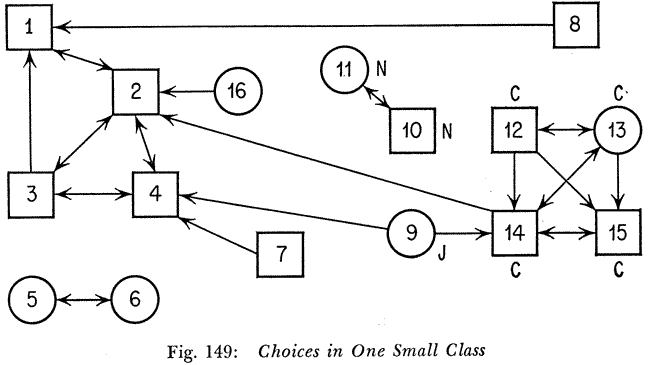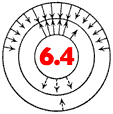Luelle Cole, Psychology of Adolescence, Holt, Rinehart, and Winston, 1960.
CHOICES IN ONE SMALL CLASS
Two years ago one of the writers had a friend who was teaching remedial reading to small groups of high school freshmen. In the fall of 1955 she had one group of sixteen adolescents, composed of nine white pupils, two Negroes, four Chinests (recently arrived in this country), and one Japanese. Early in the semester she made a sociogram of this group. Although she asked the pupils to select two or three others with whom they would like to work, eight of the group selected only one; three selected two, and only four had three positive choices. In only one case did any member choose another not of the same race, and this choice was not mutual. The sociogram, reproduced in Figure 149, shoed this teacher had in her class one clique of four boys (1, 2, 3, and 4), one mutual pair (5 and 6), and three isolates among the white children (7, 8, 16). The two Negroes and chose only each other, and four Chinese made only one choice outside their own nationality. The Japanese girl chose one white student and one Chinese, but neither choice was reciprocated. On the basis of this information, the teacher made two decisions: to have the students work in pairs that would be changed every two wees, and to have the reading matter consist of stories about children and adolescents of many lands.

